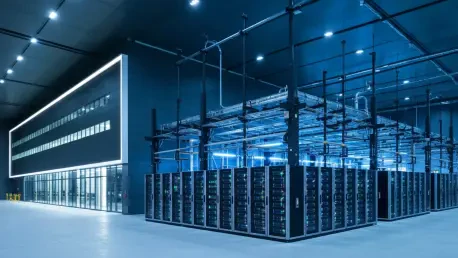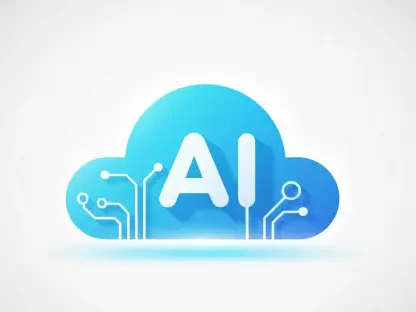In an era where digital transformation dictates the pace of global progress, a staggering shift in economic priorities has emerged, placing data centers at the heart of modern infrastructure, with recent estimates from the International Energy Agency (IEA) revealing that global investment in these facilities has surpassed spending on traditional energy sectors like oil. Billions are poured into their development annually, underscoring a profound reality: the digital economy is no longer a secondary player but a dominant force reshaping how resources are allocated. As artificial intelligence (AI) and cloud computing drive unprecedented demand for processing power, data centers are becoming the backbone of technological advancement. Yet, this rapid growth brings with it complex challenges, from soaring energy consumption to strained grid systems. Exploring this transformation reveals not only the immense potential of these facilities but also the critical hurdles that must be overcome to sustain their trajectory in a world increasingly reliant on digital solutions.
The Surge in Digital Infrastructure Investment
Unprecedented Financial Commitment
The scale of financial dedication to data centers marks a historic turning point in global economic focus. According to the IEA, worldwide spending on these facilities has reached staggering heights, outstripping investments in conventional oil supplies by a significant margin. This shift reflects a broader recognition of the pivotal role that digital infrastructure plays in driving innovation across industries, from healthcare to finance. Unlike traditional energy projects, which often face long gestation periods, the urgency to build data centers is fueled by the immediate needs of AI, big data analytics, and cloud services. The United States leads this investment surge, accounting for a substantial portion of new projects, while Europe and China are also ramping up efforts to secure their positions in the digital race. However, this rapid influx of capital is not without complications, as the sheer pace of development often outstrips the ability of local infrastructure to support it, raising questions about sustainability and long-term planning in this high-stakes sector.
Global Distribution of Growth
Beyond the financial numbers, the geographical spread of data center expansion paints a vivid picture of a truly global phenomenon. Major hubs are emerging near urban centers with populations exceeding 1 million, where access to talent and connectivity is optimal. The United States is poised to drive half of the global demand increase over the coming years, with key regions like Northern Virginia becoming epicenters of activity. Meanwhile, Europe and China contribute significantly to the remaining growth, each tailoring their strategies to regional needs and resources. This concentration in specific areas, however, introduces challenges such as grid congestion, with wait times for connections stretching up to a decade in some locations. Dublin, for instance, has temporarily halted new interconnection requests until later this decade due to capacity constraints. These regional disparities highlight the uneven pace of digital infrastructure development and the pressing need for coordinated solutions to balance growth with operational realities across different parts of the world.
Energy Demands and Sustainability Challenges
Escalating Electricity Consumption
The energy appetite of data centers is growing at an astonishing rate, driven largely by the computational demands of AI technologies. Forecasts from the IEA suggest that electricity usage by AI-focused data centers could increase fivefold by the end of the decade, effectively doubling the total energy consumed by all such facilities currently. This dramatic rise stands in contrast to the more moderate growth expected from conventional data centers, which still contribute to the overall burden on power grids. The implications of this trend are profound, as the digital economy’s reliance on an uninterrupted power supply becomes a critical bottleneck. With the United States expected to shoulder a significant share of this demand spike, alongside substantial contributions from Europe and China, the strain on existing energy infrastructure is becoming increasingly evident. Addressing this escalating consumption requires not just more capacity but smarter strategies to ensure that growth in digital capabilities does not come at the expense of energy security or environmental goals.
Transition to Renewable Energy Sources
Amid the mounting energy demands, a promising shift toward sustainability is underway in the data center sector. The IEA projects that by 2035, renewable energy, particularly solar, will emerge as the dominant power source for new facilities, thanks to significant cost reductions in recent years. Over the next decade, renewables are expected to deliver hundreds of terawatt-hours of electricity to data centers, far outpacing contributions from natural gas. There is also potential for small modular nuclear power plants to play a role, provided they overcome developmental hurdles. This transition reflects a growing consensus on the importance of aligning technological expansion with environmental responsibility. However, the current grid infrastructure often lags behind these ambitions, struggling to integrate cleaner energy at the necessary scale. Innovations like solid-state transformers offer hope for better renewable integration and grid stability, though their widespread adoption remains years away, emphasizing the urgency of interim solutions to bridge the gap.
Navigating Grid and Supply Chain Barriers
The rapid expansion of data centers is not without significant logistical hurdles, particularly concerning grid connectivity and supply chain limitations. In high-demand areas, such as Northern Virginia, operators face wait times of up to ten years for grid connections, while other regions have imposed temporary moratoriums on new requests. These delays are compounded by shortages of critical components like cables, transformers, and gas turbines, which are essential for scaling up capacity. Such bottlenecks threaten to derail the momentum of digital growth, as even the most well-funded projects can be stalled by infrastructure constraints. Emerging technologies, including advanced transformers designed to handle diverse power conversions, are being developed as potential fixes, but their deployment is not imminent. Until these solutions mature, the industry must grapple with balancing ambitious expansion plans against the practical realities of an overstretched energy ecosystem, highlighting the need for strategic investments in grid modernization to keep pace with digital demands.
Reflecting on a Transformative Era
Looking back, the journey of data centers reveals a remarkable evolution, as they have overtaken traditional energy investments to become central pillars of the global economy. Their energy consumption has soared, fueled by the relentless rise of AI applications, with regions like the United States, Europe, and China leading the charge. Yet, challenges such as grid congestion and supply chain disruptions underscore the complexities of this rapid ascent. The shift toward renewables offers a glimmer of hope, promising a more sustainable path forward, while emerging technologies hint at future stability. Moving ahead, stakeholders must prioritize innovative grid solutions and accelerate the adoption of cleaner energy to support this unstoppable growth. Collaborative efforts between governments, industry leaders, and technology innovators will be essential to address infrastructure limitations and ensure that the digital economy continues to thrive without compromising environmental goals. This transformative era serves as a reminder of the delicate balance required to harness technological progress for a sustainable future.









